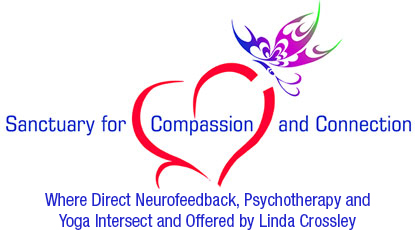5 Intention-setting Ideas to Expand Our Human Capacity for Empathy
“Could a greater miracle take place than for us to look through each other’s eyes for an instant?” ― Henry David Thoreau
Empathy is our ability to sense the emotional experience of another person, our wish to understand another person’s perspective, which may be difficult when it is different from our own, and be open to allowing the understanding to guide our actions. Thanks to the discovery of mirror neurons in our brains, neuroscientists have opened the door to viewing the human capacity for empathy as an attribute that can be exercised and strengthened just like our muscles in our body.
And with much of the efforts in the world focused on creating revolutionary change at this time, it’s not surprising that the experience may be felt as polarizing, asking each of us to deeply sense and feel our own emotions, possibly beyond our own emotionally intelligent skill set. So setting an intention to try one of the five ideas (listed below) to expand our individual capacity for empathy for our fellow human beings around the globe may just be the spark that lights the flame that draws others to the light, where we can see more clearly that we all simply desire to be accepted as we are, appreciated for our unique gifts, and loved unconditionally as we grow:
- Make (and maintain) eye contact and smile. We are social beings, yet in this ‘social media’ era, we find ourselves more connected to an electronic device than to other living, breathing beings. It feels good to be seen and greeted with a warm smile. Simply smiling can calm fear and anxiety not only in you, but within the people you share your smile with. Might I suggest a simply practice that takes less than a minute and let me know what the experience is like: Close your eyes. Inhale deeply. As you exhale, drop your chin to your chest. Curl the corners of your lips into a smile, inhale your head back up and then exhale. Before opening your eyes, check in with yourself. Do you feel a bit lighter?
- Listen deeply to another without interrupting. Everyone has a story. As I read a long time ago in The 7 Habits of Highly Effective People by Stephen Covery, “Seek to understand before seeking to be understood.” Challenge yourself the next time you are having a conversation with someone to notice how many times you are formulating a response before the person has finished speaking, which means you are not really listening at all. Then, consider trying to briefly summarize what you think you heard the person say before offering your response. Recently, I asked a friend if she would be willing to answer a question that might be politically charged if I promised to not respond with my opinion at all – I just wanted to hear and understand her perspective. She agreed and I learned a lot!
- Identify and challenge your own prejudices. Whether we want to admit it or not, we all harbor prejudices, even if they are not our own. We most likely inherited them from our family or the larger societal culture we grew up in. But until we can own them and then begin to reflect on the roots of such assumptions, we block our own growth and the potential growth of the collective consciousness. Once we own them, we can begin to challenge them by looking for what all humans have in common instead of focusing on what makes us different.
- Be curious. When judgment comes up, take a breath and invite in curiosity. The more curious we are, the more we open the door to our own happiness (as research is starting to show). Curiosity about others, particularly people we don’t know well or maybe not at all, creates a tremendous learning opportunity, one in which we might just learn something new that makes our own lives easier. Curiosity also expands understanding and understanding expands our empathy and connection to others.
- Practice Ahimsa. Ahimsa is a Sanskrit term that is typically translated to ‘non-violence’. During my journey to becoming a yoga teacher, I was challenged to step back and observe my self-talk and notice how violent it could get. If we were to record our thoughts about ourselves and play it out loud, you would probably be a bit shocked at how harsh we can be towards ourselves – and certainly would think we would never speak to another person that way. So practicing Ahimsa starts with each one of us individually, checking our own unkind self-talk and actively showing ourselves more loving kindness and understanding that we too are simply a human being doing what we can to survive. When we can demonstrate to ourselves that we are worth such kindness, hostility disappears, both within ourselves and towards others!



